Ad
LazyRecord: The Fast ORM for PHP
- 1. LazyRecord The Fast PHP ORM 林佑安 Yo-An Lin (c9s) 12年4月22⽇日星期⽇日
- 2. .metadata • 林佑安 (c9s) • 190 repo/projects on GitHub • Perl programming since 2008 • PHP programming since last year • c, c++, javascript, obj-c, ruby, python, haskell, java, c#,VB .NET ... 12年4月22⽇日星期⽇日
- 3. Why another PHP ORM ? 12年4月22⽇日星期⽇日
- 4. PHP ORMs • Doctrine 12年4月22⽇日星期⽇日
- 5. PHP ORMs • Doctrine • Propel 12年4月22⽇日星期⽇日
- 6. PHP ORMs • Doctrine • Propel • Idiorm / Paris 12年4月22⽇日星期⽇日
- 7. Propel / Doctrine • Propel uses XML Schema file. 12年4月22⽇日星期⽇日
- 8. Propel / Doctrine • Propel uses XML Schema file. • Doctrine uses XML/YAML/Annotations. 12年4月22⽇日星期⽇日
- 9. Propel / Doctrine • Propel uses XML Schema file. • Doctrine uses XML/YAML/Annotations. • Slow & Fat. 12年4月22⽇日星期⽇日
- 10. Propel / Doctrine • Propel uses XML Schema file. • Doctrine uses XML/YAML/Annotations. • Slow & Fat. • Doctrine is too complicated. 12年4月22⽇日星期⽇日
- 12. • XML for configuration file. • XML for schema file. • XML for everything. • Concepts are from Java, too complicated. 12年4月22⽇日星期⽇日
- 13. Propel XML runtime.conf 12年4月22⽇日星期⽇日
- 14. <?xml version="1.0"?> <config> <log> <ident>propel-bookstore</ident> <type>console</type> <level>7</level> </log> <propel> <datasources default="bookstore"> <datasource id="bookstore"> <adapter>sqlite</adapter> <connection> <classname>DebugPDO</classname> <dsn>mysql:host=localhost;dbname=bookstore</dsn> <user>testuser</user> <password>password</password> <options> <option id="ATTR_PERSISTENT">false</option> </options> <attributes> <option id="ATTR_EMULATE_PREPARES">true</option> </attributes> <settings> <setting id="charset">utf8</setting> <setting id="queries"> <query>set search_path myschema, public</query><!-- automatically set postgresql's search_path --> <query>INSERT INTO BAR ('hey', 'there')</query><!-- execute some other query --> </setting> </settings> </connection> <slaves> <connection> <dsn>mysql:host=slave-server1; dbname=bookstore</dsn> </connection> <connection> <dsn>mysql:host=slave-server2; dbname=bookstore</dsn> </connection> </slaves> </datasource> </datasources> <debugpdo> <logging> <details> <method> <enabled>true</enabled> </method> <time> <enabled>true</enabled> <precision>3</precision> </time> <mem> <enabled>true</enabled> <precision>1</precision> 12年4月22⽇日星期⽇日 </mem>
- 15. <datasource id="bookstore"> <adapter>sqlite</adapter> <connection> <classname>DebugPDO</classname> <dsn>mysql:host=localhost;dbname=bookstore</dsn> <user>testuser</user> <password>password</password> <options> <option id="ATTR_PERSISTENT">false</option> </options> <attributes> <option id="ATTR_EMULATE_PREPARES">true</option> </attributes> <settings> <setting id="charset">utf8</setting> <setting id="queries"> <query>set search_path myschema, public</query><!-- automatically set postgresql's search_path --> <query>INSERT INTO BAR ('hey', 'there')</query><!-- execute some other query --> </setting> </settings> </connection> <slaves> <connection> <dsn>mysql:host=slave-server1; dbname=bookstore</dsn> </connection> <connection> <dsn>mysql:host=slave-server2; dbname=bookstore</dsn> </connection> </slaves> </datasource> </datasources> <debugpdo> <logging> <details> <method> <enabled>true</enabled> </method> <time> <enabled>true</enabled> <precision>3</precision> </time> <mem> <enabled>true</enabled> <precision>1</precision> </mem> </details> </logging> </debugpdo> </propel> </config> 12年4月22⽇日星期⽇日
- 16. 12年4月22⽇日星期⽇日
- 17. It should be simpler 12年4月22⽇日星期⽇日
- 18. Inspirations • JiftyDBI / Perl • KiokuDB / Perl • ActiveRecord / Ruby • Propel / PHP 12年4月22⽇日星期⽇日
- 20. client = Client.find(10) client = Client.first Client.where("orders_count = ?", params[:orders]) Client.where("created_at >= :start_date AND created_at <= :end_date", {:start_date => params[:start_date], :end_date => params[:end_date]}) Client.order("created_at DESC") Client.limit(5).offset(30) 12年4月22⽇日星期⽇日
- 21. Object::Declare use Object::Declare ['MyApp::Column', 'MyApp::Param']; my %objects = declare { param foo => !is global, is immutable, valid_values are qw( more values ); column bar => field1 is 'value', field2 is 'some_other_value', sub_params are param( is happy ), param ( is sad ); }; print $objects{foo}; # a MyApp::Param object print $objects{bar}; # a MyApp::Column object # Assuming that MyApp::Column::new simply blesses into a hash... print $objects{bar}{sub_params}[0]; # a MyApp::Param object print $objects{bar}{sub_params}[1]; # a MyApp::Param object Audrey Tang 唐鳳 2006 12年4月22⽇日星期⽇日
- 22. Jifty::DBI package Simple; use Jifty::DBI::Schema; use Jifty::DBI::Record schema { column foo => type is 'text'; column bar => type is 'text'; }; 12年4月22⽇日星期⽇日
- 23. Jifty::DBI package TestApp::Model::Phone; use Jifty::DBI::Schema; use Jifty::DBI::Record schema { column user => references TestApp::Model::User by 'id', is mandatory; column type => ...; column value => validator is sub { ... }, default is sub { } ; }; 12年4月22⽇日星期⽇日
- 24. Jifty Model Schema 12年4月22⽇日星期⽇日
- 25. Jifty Model Schema ⇛ Action 12年4月22⽇日星期⽇日
- 26. Jifty Model Schema ⇛ Action ⇛ CRUD 12年4月22⽇日星期⽇日
- 27. Jifty App::Model::Phone ☚ write once 12年4月22⽇日星期⽇日
- 28. Jifty App::Model::Phone App::Model::PhoneCollection 12年4月22⽇日星期⽇日
- 29. Jifty App::Model::Phone App::Model::PhoneCollection App::Action::CreatePhone 12年4月22⽇日星期⽇日
- 30. Jifty App::Model::Phone App::Model::PhoneCollection App::Action::CreatePhone App::Action::UpdatePhone 12年4月22⽇日星期⽇日
- 31. Jifty App::Model::Phone App::Model::PhoneCollection App::Action::CreatePhone App::Action::UpdatePhone App::Action::DeletePhone 12年4月22⽇日星期⽇日
- 32. Jifty App::Model::Phone App::Model::PhoneCollection App::Action::CreatePhone App::Action::UpdatePhone App::Action::DeletePhone $phone->as_create_action()->render(); 12年4月22⽇日星期⽇日
- 33. 12年4月22⽇日星期⽇日
- 34. What we need • Can use PHP closures for validation, default value, completion ..etc. • Everything should be lazy. • Simple API • No overdesign. • Mixin schema • CRUD generation. • Front-end CRUD integration. 12年4月22⽇日星期⽇日
- 35. PHP 5.3 Characteristic • APC is fast. • json_encode / json_decode (file) are slower than require a simple array from php source code. • function is faster than class method. • class method is slower than properties. • magic method is slower than normal class method. • array is faster than object. 12年4月22⽇日星期⽇日
- 36. $array[] vs array_push https://github.com/c9s/SimpleBench 12年4月22⽇日星期⽇日
- 37. Function calls https://github.com/c9s/SimpleBench 12年4月22⽇日星期⽇日
- 39. EteDB • Initialize model schema in runtime. • Schema is defined in Model (in __constructor). • MySQL only. • dynamic class generator (using eval) • too slow. 12年4月22⽇日星期⽇日
- 41. LazyRecord • Lazy schema loader • SQL Generator • Lazy attribute for MySQL, PgSQL, SQLite • Lazy class loader • Lazy connection • SplClassLoader • Static class • ... etc generator 12年4月22⽇日星期⽇日
- 43. SQLBuilder • A Simple SQL Generator. • Prevent Injection. • Migration generator. (index, alter table...etc) • Support SQLite, Pgsql, Mysql syntax. • Pure SQL or with named-parameters. 12年4月22⽇日星期⽇日
- 44. <?php $sqlbuilder = new SQLBuilderQueryBuilder( $driver ); $sql = $sqlbuilder->table('authors')->insert([ 'name' => 'Mary', 'address' => 'Paris', ])->build(); 12年4月22⽇日星期⽇日
- 45. -- General syntax INSERT INTO authors ( name , address ) VALUES ( 'Name' , 'Address' ); -- PgSQL INSERT INTO "Authors" ( "Name" , "Address" ) VALUES ( 'Name' , 'Address' ); -- MySQL INSERT INTO `Authors` ( `Name` , `Address` ) VALUES ( 'Name' , 'Address' ); -- PDO INSERT INTO authors ( name , address ) VALUES ( ? , ? ); INSERT INTO authors ( name , address ) VALUES ( :name , :address ); 12年4月22⽇日星期⽇日
- 46. <?php $sql = $builder->table('Member')->select('*') ->where() ->equal( 'a' , 'bar' ) // a = 'bar' ->notEqual( 'a' , 'bar' ) // a != 'bar' ->is( 'a' , 'null' ) // a is null ->isNot( 'a' , 'null' ) // a is not equal ->greater( 'a' , '2011-01-01' ); ->greater( 'a' , ['date(2011-01-01)'] ); // do not escape ->or()->less( 'a' , 123 ) ->and()->like( 'content' , '%content%' ); ->group() // and ( a = 123 or b != 123 ) ->is( 'a' , 123 ) ->isNot( 'b', 123 ) ->ungroup() ->build(); 12年4月22⽇日星期⽇日
- 49. <?php $author = new Author; $ret = $author->create([ 'name' => "Deflator Test $i", 'country' => 'Tokyo', 'confirmed' => true, 'date' => new DateTime('2011-01-01 00:00:00'), ]); if( $ret->success ) { echo "Created!"; } 12年4月22⽇日星期⽇日
- 50. <?php $ret = $author->update(array( 'name' => 'Bar' )); if( $ret->success ) { echo "Updated!"; } else { echo $ret; // __toString support } 12年4月22⽇日星期⽇日
- 51. <?php $record = Author::load(array( 'name' => 'Foo' )); // To find a record with primary key: $record = Author::load( 1 ); // To update a record (static): $ret = Author::update( array( 'name' => 'Author' ))->where() ->equal('id',3) ->execute(); 12年4月22⽇日星期⽇日
- 52. $author->toJson(); $author->toArray(); $author->toXml(); $author->toYaml(); 12年4月22⽇日星期⽇日
- 54. Iterator <?php $authors = new AuthorCollection; foreach( $authors as $author ) { echo $author->name , "n" } 12年4月22⽇日星期⽇日
- 55. SQLBuilder Mix-In <?php $names = new NameCollection; $names->where() ->equal('name','Foo') ->groupBy('name','address'); ?> 12年4月22⽇日星期⽇日
- 56. Filter <?php $newCollection = $names->filter(function($item) { // do something else })->filter(function($item) { return $item->confirmed; }); ?> 12年4月22⽇日星期⽇日
- 57. Each <?php $names->each(function($item) { $item->update([ .... ]); }); ?> 12年4月22⽇日星期⽇日
- 58. Collection Pager <?php /* page 1, 10 per page */ $authors = new AuthorCollection; $pager = $authors->pager(1,10); $pager = $authors->pager(); $items = $pager->items(); $pager->next(); // next page ?> Integrate with OFFSET & LIMIT 12年4月22⽇日星期⽇日
- 59. Relationship <?php // has many $address = $author->addresses->create([ 'address' => 'farfaraway' ]); // create related address $author->addresses[] = [ 'address' => 'Harvard' ]; $addresses = $author->addresses->items(); foreach( $author->addresses as $address ) { echo $address->address , "n"; } 12年4月22⽇日星期⽇日
- 61. Powered by CascadingAttribute.php 12年4月22⽇日星期⽇日
- 62. <?php use LazyRecordSchemaSchemaDeclare; class AddressSchema extends SchemaDeclare { function schema() { } } 12年4月22⽇日星期⽇日
- 63. <?php use LazyRecordSchemaSchemaDeclare; class AddressSchema extends SchemaDeclare { function schema() { $this->column('address') ->varchar(128); } } 12年4月22⽇日星期⽇日
- 64. <?php use LazyRecordSchemaSchemaDeclare; class AddressSchema extends SchemaDeclare { function schema() { $this->column('address') ->integer(); } } 12年4月22⽇日星期⽇日
- 65. <?php use LazyRecordSchemaSchemaDeclare; class AddressSchema extends SchemaDeclare { function schema() { $this->column('address') ->timestamp(); } } 12年4月22⽇日星期⽇日
- 66. Default value & builder 12年4月22⽇日星期⽇日
- 67. $this->column('name') ->varchar(30) ->default('Default'); 12年4月22⽇日星期⽇日
- 68. $this->column('name') ->varchar(30) ->default( array('current_timestamp') ); 12年4月22⽇日星期⽇日
- 69. $this->column('name') ->varchar(30) ->defaultBuilder(function() { return date('c'); }) 12年4月22⽇日星期⽇日
- 70. $this->column('name') ->varchar(30) ->default('Default') ->default( array('current_timestamp') ) ->defaultBuilder(function() { return date('c'); }) 12年4月22⽇日星期⽇日
- 72. $this->column('name') ->varchar(30) ->validator('ValidatorClass') 12年4月22⽇日星期⽇日
- 73. $this->column('name') ->varchar(30) ->validator( array('ValidatorClass','method') ) 12年4月22⽇日星期⽇日
- 74. $this->column('name') ->varchar(30) ->validator('function_name') 12年4月22⽇日星期⽇日
- 75. $this->column('name') ->varchar(30) ->validator(function($val) { .... }) 12年4月22⽇日星期⽇日
- 77. $this->column('name') ->varchar(30) ->filter( function($val) { return preg_replace('#word#','zz',$val); }); 12年4月22⽇日星期⽇日
- 79. use LazyRecordSchemaSchemaDeclare; class NameSchema extends SchemaDeclare { function schema() { $this->column('created_on') ->date() ->isa('DateTime') ->deflator( function($val) { if( is_a( $val, 'DateTime' ) ) return $val->format('Y-m-d'); elseif( is_integer($val) ) { return strftime( '%Y-%m-%d' , $val ); } return $val; }) ->inflator( function($val) { return new DateTime( $val ); }); } } 12年4月22⽇日星期⽇日
- 80. $name->created_on; // DateTime object $name->created_on->format('Y-m-d'); $name->create([ 'created_on' => new DateTime; ]); 12年4月22⽇日星期⽇日
- 82. $this->mixin('MetadataMixinSchema'); $this->mixin('I18nMixinSchema'); $this->mixin('CommentMinxSchema'); 12年4月22⽇日星期⽇日
- 84. database.yml data_sources: master: dsn: 'mysql:host=localhost;dbname=lazy_test' user: root pass: 123123 12年4月22⽇日星期⽇日
- 85. database.yml data_sources: master: dsn: 'mysql:host=localhost;dbname=lazy_test' user: root pass: 123123 slave: dsn: 'mysql:dbname=lazy_test' query_options: { quote_column: true, quote_table: true } 12年4月22⽇日星期⽇日
- 86. database.yml data_sources: master: dsn: 'mysql:host=localhost;dbname=lazy_test' user: root pass: 123123 slave: dsn: 'mysql:dbname=lazy_test' query_options: { quote_column: true, quote_table: true } schema // data source for writing $this->writeTo('master'); // data source for reading $this->readFrom('slave'); 12年4月22⽇日星期⽇日
- 88. LazyBone http://github.com/c9s/LazyBone.git 12年4月22⽇日星期⽇日
- 90. LazyRecord + Roller Router + RESTful Plugin + Backbone.js 12年4月22⽇日星期⽇日
- 92. sudo bash -c "$(curl -s -L https://raw.github.com/c9s/LazyRecord/master/install.sh)" 12年4月22⽇日星期⽇日
- 94. config/database.yml --- bootstrap: - bootstrap.php schema: paths: - model data_sources: default: dsn: 'sqlite:/tmp/todos.db' 12年4月22⽇日星期⽇日
- 95. $ lazy build-conf config/database.yml Convert YAML to PHP. <?php $config = require '.lazy.php'; APC caches this automatically. 12年4月22⽇日星期⽇日
- 97. <?php class TodoSchema extends LazyRecordSchemaSchemaDeclare { function schema() { $this->column('id') ->primary() ->autoIncrement() ->integer(); $this->column('title') ->text(); $this->column('done') ->boolean() ->default(false); $this->column('created_on') ->defaultBuilder( function() { return date('c'); } ) ->timestamp(); } function bootstrap($model) { $model->create(array( 'title' => 'Foo', )); } } 12年4月22⽇日星期⽇日
- 98. Create static schema files 12年4月22⽇日星期⽇日
- 99. 12年4月22⽇日星期⽇日
- 100. $ lazy build-schema model/TodoSchema.php 12年4月22⽇日星期⽇日
- 101. $ lazy build-schema model/TodoSchema.php ... Classmap: ! TodoSchemaProxy => model/TodoSchemaProxy.php ! TodoBase => model/TodoBase.php ! Todo => model/Todo.php ! TodoCollectionBase => model/TodoCollectionBase.php ! TodoCollection => model/TodoCollection.php Done 12年4月22⽇日星期⽇日
- 103. 12年4月22⽇日星期⽇日
- 104. $ lazy build-sql model/TodoSchema.php 12年4月22⽇日星期⽇日
- 105. $ lazy build-sql model/TodoSchema.php Building SQL for TodoSchema --- SQL for TodoSchema CREATE TABLE todos ( id integer primary key autoincrement, title text, done boolean default 0, created_on timestamp ); 12年4月22⽇日星期⽇日
- 106. Integrate with your application 12年4月22⽇日星期⽇日
- 107. <?php use LazyRecordConfigLoader; $config = new ConfigLoader; $config->load( __DIR__ . '/.lazy.php'); $config->init(); 12年4月22⽇日星期⽇日
- 109. Roller Router High performance router for PHP 12年4月22⽇日星期⽇日
- 110. Roller Router • APC cache • FileSystem cache • Use Array to store routes • through PHP extension, can dispatch 1607% faster than pure php version • Annotation reader support • RESTful plugin 12年4月22⽇日星期⽇日
- 111. $router = new RollerRouter; $router->get( '/blog/:id/:title' , function($id,$title) { return 'Blog'; }); $router->post( '/blog/:year/:month/:id/:title', array('Controller','method') ); $router->any( '/path/to/:year' , array('Callback','method') , array( 'year' => 'd+', )); 12年4月22⽇日星期⽇日
- 112. RouteSet <?php $subroutes = new RollerRouteSet; $subroutes->add( '/subitem' , $cb ); $routes = new RollerRouteSet; $routes->mount( '/item' , $subroutes ); /item/subitem => $cb 12年4月22⽇日星期⽇日
- 113. Dispatch $r = $router->dispatch( isset($_SERVER['PATH_INFO']) ? $_SERVER['PATH_INFO'] : '/' ); if( $r ) { echo $r(); } else { die('Page not found'); } 12年4月22⽇日星期⽇日
- 115. <?php $router = new RollerRouter( null, array( 'cache_id' => 'router_demo' )); $restful = new RollerPluginRESTful(array( 'prefix' => '/=/restful' )); $restful->setGenericHandler( 'MyGenericHandler' ); $router->addPlugin($restful); 12年4月22⽇日星期⽇日
- 116. Auto-generated routes GET /=/restful/posts GET /=/restful/posts.json GET /=/restful/posts.yml GET /=/restful/posts/23 GET /=/restful/posts/23.json POST /=/restful/posts/23 DELETE /=/restful/posts/23 12年4月22⽇日星期⽇日
- 117. Define Your Resource Handler 12年4月22⽇日星期⽇日
- 118. <?php use RollerPluginRESTfulResourceHandler; use RollerPluginRESTfulGenericHandler; class MyGenericHandler extends GenericHandler { public function create($resource) { } public function load($resource,$id) { } public function update($resource,$id) { } public function delete($resource,$id) { } public function find($resource) { } } 12年4月22⽇日星期⽇日
- 119. <?php namespace LazyBoneResource; use RollerPluginRESTfulResourceHandler; use Todo; use TodoCollection; class TodoResource extends ResourceHandler { public function create() { $vars = json_decode($this->readInput(),true); $todo = new Todo; $ret = $todo->create($vars); if( $ret->success ) { return $todo->toArray(); } $this->codeBadRequest(); return array( 'error' => $ret->message ); } public function update($id) { $todo = new Todo( $id ); if( ! $todo->id ) { return $this->codeNotFound(); } $vars = json_decode($this->readInput(),true); unset( $vars['created_on'] ); // lazy record bug if($vars) { $todo->update( $vars ); return $todo->toArray(); } return $this->codeBadRequest(); } .... 12年4月22⽇日星期⽇日
- 121. Todo = Backbone.Model.extend({ // Default attributes for the todo item. defaults: function() { return { title: "empty todo...", done: false // order: Todos.nextOrder(), }; }, // Toggle the `done` state of this todo item. toggle: function() { this.save({done: !this.get("done")}); }, clear: function() { this.destroy(); } }); 12年4月22⽇日星期⽇日
- 122. TodoList = Backbone.Collection.extend({ // Reference to this collection's model. model: Todo, url:"/=/todos", done: function() { return this.filter(function(todo){ return todo.get('done'); }); }, remaining: function() { return this.without.apply(this, this.done()); }, }); 12年4月22⽇日星期⽇日
- 123. 12年4月22⽇日星期⽇日
- 124. Hacking forks welcome! http://github.com/c9s/LazyRecord.git 12年4月22⽇日星期⽇日
- 125. Q &A ? 12年4月22⽇日星期⽇日



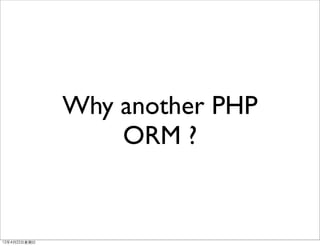
















![client = Client.find(10)
client = Client.first
Client.where("orders_count = ?", params[:orders])
Client.where("created_at >= :start_date AND created_at <= :end_date",
{:start_date => params[:start_date], :end_date => params[:end_date]})
Client.order("created_at DESC")
Client.limit(5).offset(30)
12年4月22⽇日星期⽇日](https://image.slidesharecdn.com/lazyrecordorm-120422064814-phpapp02/85/LazyRecord-The-Fast-ORM-for-PHP-20-320.jpg)
![Object::Declare
use Object::Declare ['MyApp::Column', 'MyApp::Param'];
my %objects = declare {
param foo =>
!is global,
is immutable,
valid_values are qw( more values );
column bar =>
field1 is 'value',
field2 is 'some_other_value',
sub_params are param( is happy ), param ( is sad );
};
print $objects{foo}; # a MyApp::Param object
print $objects{bar}; # a MyApp::Column object
# Assuming that MyApp::Column::new simply blesses into a hash...
print $objects{bar}{sub_params}[0]; # a MyApp::Param object
print $objects{bar}{sub_params}[1]; # a MyApp::Param object
Audrey Tang
唐鳳
2006
12年4月22⽇日星期⽇日](https://image.slidesharecdn.com/lazyrecordorm-120422064814-phpapp02/85/LazyRecord-The-Fast-ORM-for-PHP-21-320.jpg)














![$array[] vs array_push
https://github.com/c9s/SimpleBench
12年4月22⽇日星期⽇日](https://image.slidesharecdn.com/lazyrecordorm-120422064814-phpapp02/85/LazyRecord-The-Fast-ORM-for-PHP-36-320.jpg)





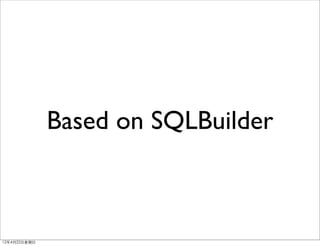

![<?php
$sqlbuilder = new SQLBuilderQueryBuilder( $driver );
$sql = $sqlbuilder->table('authors')->insert([
'name' => 'Mary',
'address' => 'Paris',
])->build();
12年4月22⽇日星期⽇日](https://image.slidesharecdn.com/lazyrecordorm-120422064814-phpapp02/85/LazyRecord-The-Fast-ORM-for-PHP-44-320.jpg)

![<?php
$sql = $builder->table('Member')->select('*')
->where()
->equal( 'a' , 'bar' ) // a = 'bar'
->notEqual( 'a' , 'bar' ) // a != 'bar'
->is( 'a' , 'null' ) // a is null
->isNot( 'a' , 'null' ) // a is not equal
->greater( 'a' , '2011-01-01' );
->greater( 'a' , ['date(2011-01-01)'] ); // do not escape
->or()->less( 'a' , 123 )
->and()->like( 'content' , '%content%' );
->group() // and ( a = 123 or b != 123 )
->is( 'a' , 123 )
->isNot( 'b', 123 )
->ungroup()
->build();
12年4月22⽇日星期⽇日](https://image.slidesharecdn.com/lazyrecordorm-120422064814-phpapp02/85/LazyRecord-The-Fast-ORM-for-PHP-46-320.jpg)


![<?php
$author = new Author;
$ret = $author->create([
'name' => "Deflator Test $i",
'country' => 'Tokyo',
'confirmed' => true,
'date' => new DateTime('2011-01-01 00:00:00'),
]);
if( $ret->success ) {
echo "Created!";
}
12年4月22⽇日星期⽇日](https://image.slidesharecdn.com/lazyrecordorm-120422064814-phpapp02/85/LazyRecord-The-Fast-ORM-for-PHP-49-320.jpg)







![Each
<?php
$names->each(function($item) {
$item->update([ .... ]);
});
?>
12年4月22⽇日星期⽇日](https://image.slidesharecdn.com/lazyrecordorm-120422064814-phpapp02/85/LazyRecord-The-Fast-ORM-for-PHP-57-320.jpg)

![Relationship
<?php
// has many
$address = $author->addresses->create([
'address' => 'farfaraway'
]);
// create related address
$author->addresses[] = [
'address' => 'Harvard'
];
$addresses = $author->addresses->items();
foreach( $author->addresses as $address ) {
echo $address->address , "n";
}
12年4月22⽇日星期⽇日](https://image.slidesharecdn.com/lazyrecordorm-120422064814-phpapp02/85/LazyRecord-The-Fast-ORM-for-PHP-59-320.jpg)











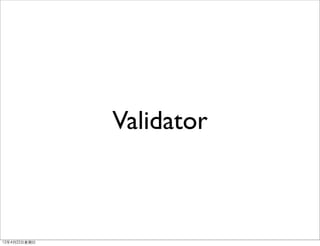


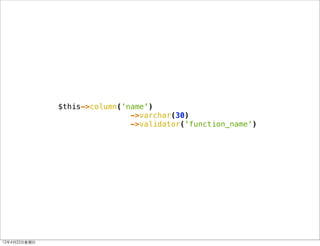



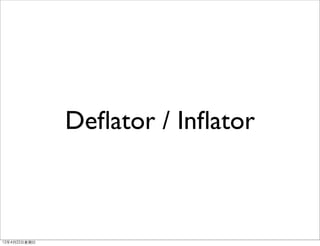

![$name->created_on; // DateTime object
$name->created_on->format('Y-m-d');
$name->create([
'created_on' => new DateTime;
]);
12年4月22⽇日星期⽇日](https://image.slidesharecdn.com/lazyrecordorm-120422064814-phpapp02/85/LazyRecord-The-Fast-ORM-for-PHP-80-320.jpg)












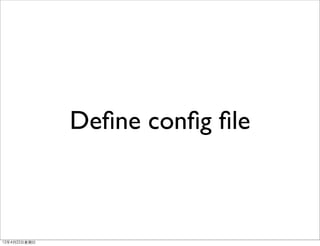
















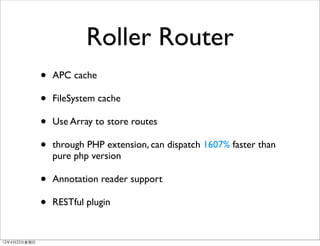


![Dispatch
$r = $router->dispatch( isset($_SERVER['PATH_INFO'])
? $_SERVER['PATH_INFO']
: '/' );
if( $r ) {
echo $r();
} else {
die('Page not found');
}
12年4月22⽇日星期⽇日](https://image.slidesharecdn.com/lazyrecordorm-120422064814-phpapp02/85/LazyRecord-The-Fast-ORM-for-PHP-113-320.jpg)





![<?php
namespace LazyBoneResource;
use RollerPluginRESTfulResourceHandler;
use Todo;
use TodoCollection;
class TodoResource extends ResourceHandler
{
public function create()
{
$vars = json_decode($this->readInput(),true);
$todo = new Todo;
$ret = $todo->create($vars);
if( $ret->success ) {
return $todo->toArray();
}
$this->codeBadRequest();
return array( 'error' => $ret->message );
}
public function update($id)
{
$todo = new Todo( $id );
if( ! $todo->id ) {
return $this->codeNotFound();
}
$vars = json_decode($this->readInput(),true);
unset( $vars['created_on'] ); // lazy record bug
if($vars) {
$todo->update( $vars );
return $todo->toArray();
}
return $this->codeBadRequest();
}
....
12年4月22⽇日星期⽇日](https://image.slidesharecdn.com/lazyrecordorm-120422064814-phpapp02/85/LazyRecord-The-Fast-ORM-for-PHP-119-320.jpg)














































































